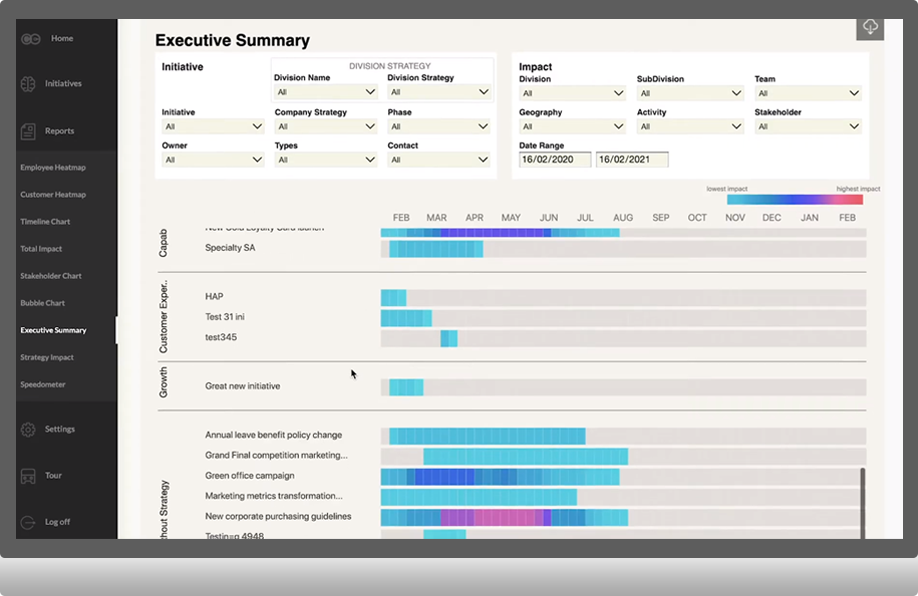Captured during a 5-day trek in Tasmania’s southwestern wilderness known as the Western Arthurs, this photograph reflects a journey undertaken four years prior, just before devastating bushfires swept through Tasmania, altering its pristine landscapes. The region, notorious for persistent rain and limited sunshine, graced us with consecutive sunlit days, making it a standout global hiking experience, rivaling trails in the Italian Dolomites, the Himalayas, and the Canadian Rockies.
Embarking on a 5-day expedition in Tasmania’s southwest demands self-sufficiency—carrying all your food, drinking from rivers, and sleeping in a tent with no huts or running water. The solitude is profound, with few fellow hikers; most of the time, it’s just you and Mother Nature.
Childhood lessons painted Mother Nature as a battlefield for survival, where each tree competes fiercely for sunlight, nutrients, and dominance over the land. However, this narrative is challenged by Suzanne Simard, a professor of forest ecology at the University of British Columbia. Over two decades of study revealed that a forest’s essence lies not in individual tree struggles but in subterranean partnerships. Simard unveiled the symbiotic relationship between trees and fungi, known as mycorrhizas—thread-like fungi merging with tree roots. They aid trees in extracting water and nutrients, receiving carbon-rich sugars produced through photosynthesis in return. (For more details, refer to the New York Times article.)
Mycorrhizas serve as the connective tissue of the forest, intertwining trees of different species through an extensive web. This transforms the forest into more than a mere collection of trees. In times of crisis, a tree at the brink of death may altruistically share a substantial portion of its carbon with neighboring trees. The forest thus emphasizes cooperation, negotiation, reciprocity, and selflessness alongside survival and competition.
Remarkably, this ecosystem mirrors the principles of effective change networks. A change network possesses the capacity to reach every individual in a company. Unlike being confined to a specific business unit or hierarchy level, a well-designed change network transcends organizational boundaries.
Let’s delve deeper into the characteristics of a robust and efficient change network…

1) Project-agnostic
In the dynamic landscape of change networks, a paradigm shift from the traditional project-specific model to a project-agnostic approach emerges as a strategic imperative. The conventional methodology, with its exclusive focus on single projects, often results in a staggering 69% of projects achieving initial objectives, while 15% are considered failures.
This project-specific model, besides its high failure rate, also contributes to significant resource wastage. Identifying, training, and sustaining a robust change champion network for each project frequently overshoots the project’s lifecycle, hindering desired outcomes and accounting for the 70% failure rate in projects.
Contrastingly, a more efficient paradigm involves nurturing change champions with the ability to support multiple projects. This not only optimizes resource allocation but also aligns with the agile principle, as highlighted by the 56% of companies that exclusively use a single project management methodology.
These versatile change champions, akin to Starbucks’ “My Starbucks Idea” initiative, play a pivotal role in connecting the dots across projects, providing invaluable insights, and fostering a culture of collaboration. Starbucks’ successful implementation of change through customer-driven ideas, resulting in over 5 million monthly page visits, is a testament to the power of adaptable change networks.
Drawing a parallel to the natural world, where mycorrhizas take time to strengthen and fortify the forest, change champions undergo a transformative journey with each project involvement. Their sustained engagement refines their change management skills and delivery expertise, enhancing their proficiency with every endeavor.
The diverse and creative approaches observed in change champions, ranging from themed outfits to innovative reminders, reflect the adaptability crucial for effective end-user engagement. This adaptability serves as the cornerstone of a thriving change champion network, where experimentation and varied strategies contribute to its vibrancy and success. Similar to the ever-evolving forest ecosystem, change networks flourish when nurtured with creativity and adaptability.

2) Cuts across layers
In the realm of change networks, adopting a project-agnostic approach emerges as a strategic shift from the traditional project-specific model. The conventional method involves forming change networks tailored exclusively to a single project, with champions disbanded at the project’s conclusion.
However, this model poses inherent challenges, leading to significant resource wastage. The effort to identify, train, and sustain a robust change champion network for each project often exceeds the project’s lifespan, impeding desired outcomes.
To address this, the change champion network needs to cut across not only different parts of the business but also different layers of the organization. A lot of change champion networks are designed at the mid-layer of the organization, typically involving middle managers. While middle managers can influence the outcome of the change more than frontline staff members, relying solely on this layer may not be sufficient.
Here’s why:
- Detail Feedback: Middle managers are often not the ‘end users’ of systems or processes, making it challenging for them to provide detailed feedback on the suitability of the change, sentiments of end users, or necessary adjustments in the change solution.
- Signal Loss: Depending on the organization, there may be 1-3 layers between middle managers and end users, resulting in potential ‘signal loss’ where thoughts, emotions, and feedback from the lowest layers of the organization may not be effectively communicated.
- Limited Testing Input: Middle managers are usually not directly involved in system or process testing, limiting their ability to provide detailed input to shape the change. Their contributions often focus on higher-level strategies for engaging impacted teams.
To build a strong, vibrant, and extensive change champion network, engagement needs to extend to different layers of the organization, not just the middle layers but also the lower layers. While top layers may be engaged through various committees, middle and lower layers require dedicated change champions.
Similar to the mycorrhizas connecting different trees in a forest, the change champion network, when stronger and more extensive, becomes more capable of influencing and driving change both vertically and horizontally across the company. This inclusivity ensures that smaller business groups are not neglected or deprioritized, contributing to the overall success and adaptability of the change network.

3) Routine interfaces
In the intricate ecosystem of a forest, mycorrhizas play a vital role by providing essential sustenance, and supplying critical nitrogen, water, and other nutrients to plants. In the organizational landscape, change champions serve a similar crucial function. Armed with comprehensive knowledge and a deep understanding of the change, along with the latest updates on its impacts, they possess the ability to interpret messages in a way that resonates with those directly affected, using a language that is tailored to each team’s unique history, priorities, and culture.
Unlike program-level communication, which may be too generalized, the interaction with change champions is a dynamic, two-way process. They engage with impacted employees, actively assessing and understanding where individuals stand in their change journey. This engagement leads to a clear comprehension of the specific communication, learning, or leadership support needs of impacted teams. High-performing change champions delve beyond the surface, understanding the motivations and demotivators of the teams they serve. This wealth of insights becomes a powerful set of messages that can be fed back to the central project mothership.
What sets high-performing change champions apart is not just their ability to communicate and collect feedback; they proactively sense-check and virtually “walk the floor” to feel the pulse of the employees. Often, change champions are directly impacted by themselves, fostering a natural empathy that enables them to connect with others undergoing change. In this dynamic, there is a delicate balance between self-interest and selflessness, as change champions strive not only to navigate their own challenges but also to extend support and assistance to those in need. This nuanced approach mirrors the harmony found in natural ecosystems, where organisms cooperate for mutual benefit.
4) Cross-network collaboration
Within the expansive framework of an extensive change network, diverse sub-teams of change champions naturally emerge, often organized by business units or grade levels. While connecting with peers within the same level might be straightforward, establishing collaboration across hierarchies, especially with those perceived as ‘managers,’ can pose challenges.
To overcome these challenges, intentional routines must be established to facilitate frequent sharing and collaboration among different change champion teams. In the natural world, trees emit chemical alarm signals to warn nearby trees of potential danger. Similarly, within a business context, a team from one business unit may sense a looming risk for change failure based on their experiences, which they can share with other teams yet to undergo the change.
Conversely, successful experiments in one part of the business should be readily proliferated in other areas of the organization. For instance, in a large insurance company, a change champion network recognized the need for frontline staff working virtually to have a platform for immediate queries and responses. The solution was a chat channel implemented under Microsoft Teams, approved by IT. In this channel, frontline staff could freely pose questions about system usage, shortcuts, and outages, and addressing customer concerns.
Initially, the channel had few questions, but as prompt and helpful responses were provided, engagement grew. Today, it stands as one of the most active Teams chat channels in the company, showcasing the effectiveness of cross-network collaboration. This success story has inspired similar initiatives in other businesses, emphasizing the ripple effect of successful collaboration practices within change networks.

5) Nurturing the network
Sustaining a change champion network is an ongoing endeavor that demands continuous nurturing, engagement, support, and leadership. Similar to any community, these networks thrive when provided with the right conditions and resources. Several key activities contribute to the nurturing of a dynamic and effective change champion network:
Onboarding and Expectation Setting: New members need comprehensive onboarding sessions where they receive information about the network’s objectives, core principles, expected time commitments, and other essential details.
Change Capability Sessions: Continuous learning is crucial for change champions. Sessions covering various topics, such as impact assessment, change communication, feedback provision during testing, and engagement with impacted stakeholder groups, help enhance their skills.
Leader Support: The involvement of senior leaders in certain sessions can provide valuable support and visibility to the network’s efforts, emphasizing the importance of their work in the broader organizational context.
Cross-Business Unit Networking: Structured agendas for cross-business unit change champion networking sessions create opportunities for sharing ideas and best practices, fostering a collaborative environment.
Routine Forums: Establishing routine forums for discussing project-specific topics allows members to stay informed and aligned with ongoing initiatives.
Formal Acknowledgments and Prizes: Recognizing key milestones and achievements through formal acknowledgments and prizes not only celebrates success but also motivates members to actively contribute.
Data Access: Providing change champions with access to change data, including impact assessments, readiness metrics, and change roadmaps, empowers them with valuable insights into upcoming changes and their stakeholder implications.
Regular Membership Reviews: Like any dynamic network, regular reviews of membership are essential. Some members may not meet expectations, and their roles might need to be filled by others. Expecting turnover and proactively managing it ensures a continuous influx of fresh perspectives and contributions.
Change champions, armed with comprehensive data on change impact, play a pivotal role in facilitating a clear understanding of impending changes and their ramifications for stakeholders. Regular reinforcement, support, and occasional challenges contribute to the resilience and effectiveness of the change champion network.
6) Supporting multiple initiatives
In the dynamic landscape of organizational change, it’s common for each business unit to undergo multiple initiatives simultaneously. Change champions play a pivotal role in navigating this complex terrain, supporting various initiatives and connecting the dots to form a coherent narrative for the impacted audience. Here’s why having change champions who can support multiple initiatives is crucial:
- Holistic Understanding: Change champions, acting as the linchpin between different initiatives, provide a holistic understanding of the changes unfolding within a business unit. This comprehensive view enables them to craft a cohesive story that resonates with the audience, fostering better comprehension and buy-in.
- Connecting the Dots: A key function of change champions is to connect disparate initiatives into a unified narrative. By highlighting interdependencies and common goals, they contribute to a more seamless and integrated change experience for stakeholders.
- Predicting Crunch Periods: Change champions need to anticipate and understand the crunch periods for their business unit. By supporting multiple initiatives, they become adept at forecasting when the organization might face heightened challenges and risks that could impact daily operations.
- Strategic Risk Management: With insights into multiple initiatives, change champions become strategic risk managers. They can identify potential points of friction, overlaps, or resource constraints and proactively address them, mitigating risks that could hinder the success of the initiatives.

Example of Change Outcome: The Change Compass
In analogy to mycorrhizal networks that span diverse ecosystems, organizations face the challenge of not only developing robust change champion networks internally but also fostering connections with external networks. Just as mycorrhizal networks link various landscapes, change champion networks can extend their impact beyond organizational boundaries.
Research indicates that when change champion networks from different companies link up, a wealth of learning and collaboration unfolds. This interconnectedness leads to a blossoming of reciprocity, negotiation, and even selflessness. Organizations stand to gain immensely by facilitating the exchange of insights and experiences among diverse change champion networks, creating a thriving ecosystem of change management knowledge and practices.
Elevate your change management strategy! Book a weekly demo with us and explore how our solutions can empower your change champion network.
To check out more about designing the change process visit our Designing Change section here.






